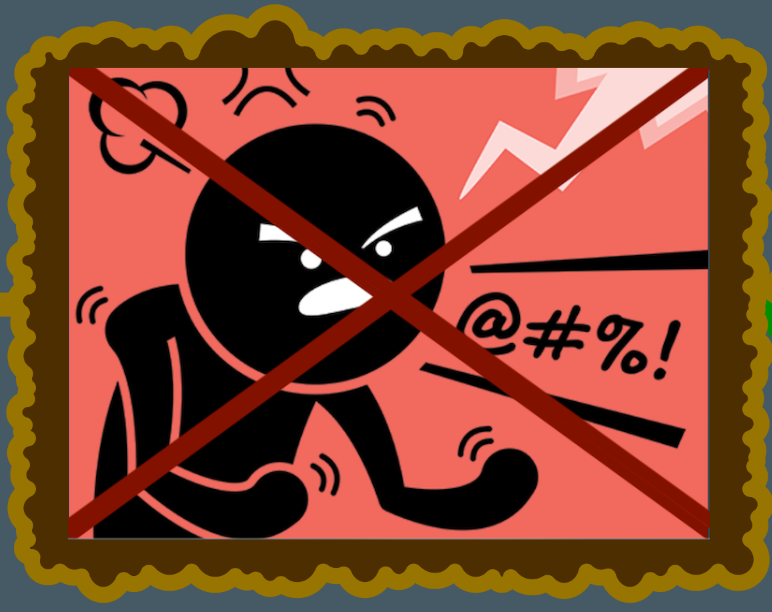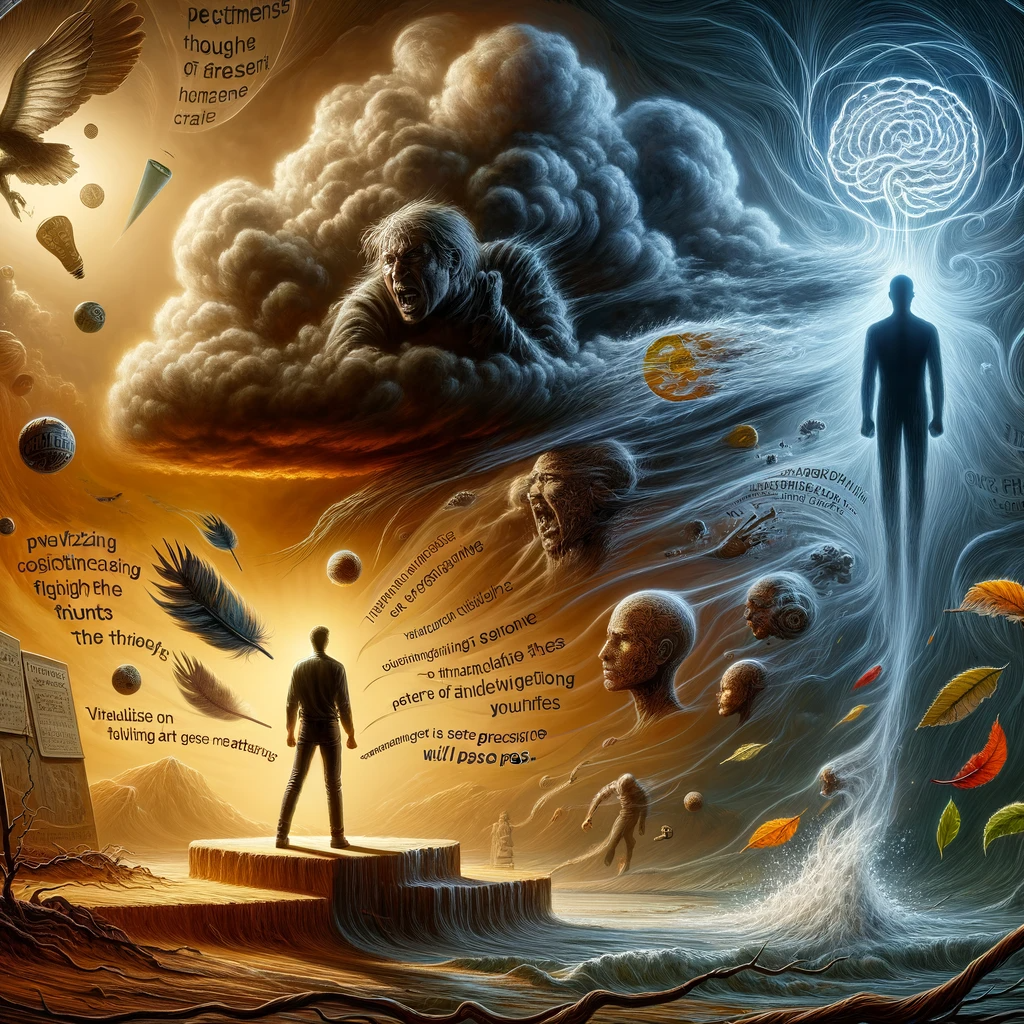How to Get Out Of
Anger
How to get out of anger state.
Firstly
Firstly: Stop Engaging with what is making you angry.

Would you pour more electricity into circuitry that is already throwing off sparks?
 Hence, stop engaging while angry.
Hence, stop engaging while angry.
IF you cannot stop engaging: Take a deep Breath & Count to 5
This is a classic and effective technique for regaining control over one's immediate emotional responses. It allows a moment of pause, a buffer between stimulus and reaction, which is essential for thoughtful decision-making.
Remember
Don't act in Anger
Anger is akin to a momentary lapse into madness, a state where rational thought is clouded and control is lost. It is a principle of stoic wisdom that to act in such a state is to exhibit weakness, for true strength lies in maintaining control over one’s emotions. To yield to anger is to surrender the reins of reason and dignity, allowing unbridled emotion to dictate actions. It is a sign of a cultivated mind to observe the rise of anger and yet choose to respond with calm deliberation. This self-mastery is the cornerstone of personal empowerment, transforming potentially destructive impulses into opportunities for growth and reflection. In this light, anger is not just an emotion to be suppressed, but a challenge to be overcome, a test of character in the pursuit of wisdom and inner strength.

Quotes
Any person capable of angering you becomes your master; he can anger you only when you permit yourself to be disturbed by him. - Epictetus
If you want to cure anger: do not feed it, say to yourself: 'I used to be angry every day then every other day', once your reach 30 days give a sacrifice to the gods. - Epictetus
"Anger is temporary madness" - Seneca
Related
Imagery

Image: In the heat of unbridled anger, imagine yourself smashing a glass – not with careful intent and planning of dismantling the glass, but in a wild, unthinking fury. The glass, once whole and unblemished, meets its fate in a moment of your recklessness. The glass shatters, its shards flying chaotically. But in this fervor, you've overlooked the aftermath. The consequences lay bare before you - the scattered, sharp remnants of your impulsive act.

And there you are, amidst the chaos of shattered glass, barefoot and exposed. The room echoes with the silence that follows your outburst. You gaze down at your feet, wincing as you see the sharp, jagged pieces embedded in your bare feet. Each shard, glistening with a cruel sharpness, is a stark testament to the impetuous fury that overtook you. The pool of blood begins to mingle with the fragments on the floor, consequences of your unbridled anger. The pain is not just physical; it's a deep, searing realization of the havoc wrought by a single, thoughtless moment of rage. Your heart pounds, not just with the pain of the wounds, but with the weight of regret for the uncontrollable tempest of emotions that led you here. All from that single mistake. The regret pierces deeply inside you. In this moment, surrounded by the remnants of your fury, you understand the true cost of anger - a cost paid not just by the world around you, but by your own being, scarred.

How to get out of Anger
How to get out of anger state.
Firstly
Firstly: Stop Engaging with what is making you angry.
too many nested note refs
Would you pour more electricity into circuitry that is already throwing off sparks?
 Hence, stop engaging while angry.
Hence, stop engaging while angry.
IF you cannot stop engaging: Take a deep Breath & Count to 5
This is a classic and effective technique for regaining control over one's immediate emotional responses. It allows a moment of pause, a buffer between stimulus and reaction, which is essential for thoughtful decision-making.
Remember
Don't act in Anger
too many nested note refs
Secondly
Secondly: ask why you feel it
Secondly ask why are you starting to feel some anger, Why do you feel you are getting mad at something?
Could it be that one of your own internal rules is being broken by yourself?
“Learn to ask of all actions: ‘Why are they doing that?’. Starting with your own.” — Marcus-Aurelius
Some self common situations
IF working: Stop Working.
Simply stop working. Right then and there Stop.
Even if there is a deadline. Take a break.
Almost any work in anger as your experience have show1ed over and over again is really Waste of Tim and Hence violation of Dont Waste Time.
too many nested note refs
IF Hungry: Eat something substantial.
Sometimes the dissonance signal is that you are hungry and haven't been eating enough. Hence, eat something substantial.
too many nested note refs
Note
Communication in Anger is Acting in Anger. Therefore, is a violation of this rule
- Instead: Delay communication:
-
Can I circle back to you later?
-
Can I get back to you later on this point?
-
Can I get some time to process?
-
Further
It should be obvious by looking at Do NOT: Act in Anger. That acting in anger is a destructive process.
However, we should strive further to not only prevent actions while angry but prevent actions while we are also in the low states of anger, that can be described as being 'heated'
too many nested note refs
Secondly
Secondly: ask why you feel it
Secondly ask why are you starting to feel some anger, Why do you feel you are getting mad at something?
Could it be that one of your own internal rules is being broken by yourself?
“Learn to ask of all actions: ‘Why are they doing that?’. Starting with your own.” — Marcus-Aurelius
Some self common situations
IF working: Stop Working.
Simply stop working. Right then and there Stop.
Even if there is a deadline. Take a break.
Almost any work in anger as your experience have show1ed over and over again is really Waste of Tim and Hence violation of Dont Waste Time.
Stop working now.
Even if you need to work: Take a prolonged break.

IF Hungry: Eat something substantial.
Sometimes the dissonance signal is that you are hungry and haven't been eating enough. Hence, eat something substantial.
Eat something substantial, with more calories than a cucumber.
Fear

Reframe your way of thinking
Reframe your way of thinking, use cognitive distancing to see the same situation from a different view point.
Such as: Reframe thoughts as hypotheses
Reframe thoughts as hypotheses: Instead of treating a thought as a fact, you can treat it as a hypothesis that can be tested or questioned. For example, instead of thinking,
"I'm going to fail,"
you could think
"I have the thought that I might fail."
Now you can:
- Distance yourself from that thought.
- Question the thought.
Or Use the third-person perspective
Use the third-person perspective: Try to look at your situation as if you were an outside observer. This can help you view your thoughts and emotions more objectively.
Visualize your thoughts
Visualize your thoughts: Imagine your thoughts as objects floating by on a stream, or as words written on leaves that are drifting away in the wind. This can help you see your thoughts as transient and separate from yourself.
Use visual submodalities
The visualization of thoughts advise is akin to whats called visual submodalities manipulation from NLP: Neuro Linguistic Programming.
Hence, consider also consider manipulating your fears using visual submodalities to lessen the degree of your fears affecting you.
Visual submodalities are the specific characteristics of our mental imagery. This includes aspects such as brightness, size, distance, and color, as well as the motion (or lack thereof), the image's perspective, and whether it is viewed first-person or third-person.
Here are ways to adjust these visual submodalities to modify the intensity of their impact:
Increase Intensity
To intensify the emotional effect of a mental image, adjust its submodalities as follows:
- Add motion: Make the image dynamic or moving.
- Enhance brightness: Make the image brightly lit.
- Enlarge: Increase the image's size.
- Saturate: Infuse the image with vibrant colors.
Decrease Intensity
To lessen the emotional effect of a mental image, manipulate its submodalities as follows:
- Keep it static: Make the image stationary or still.
- Diminish brightness: Make the image dim or dull.
- Reduce size: Shrink the image to a smaller size.
- Desaturate: Transform the image into black and white.
Question yourself in why NOT fashion
- Why you are not afraid?
- Why were you afraid? What made you overcome your fear?
- What steps have you taken mentally to move past it?
Worst case scenario tactic
Worst case scenario tactic
You can also use worst case scenario tactic. Imagine the worst case scenario. While imaging worst case and coping with it all of a sudden you realize the problem that you feared is not as large you have imagined.
In the end zoom out. Memento Mori - Remember That you will Die., what you fear now will pass.
Children
Backlinks